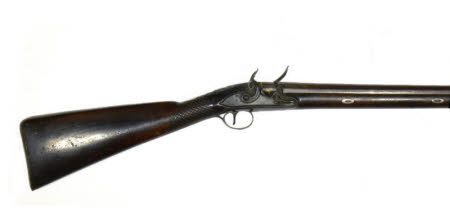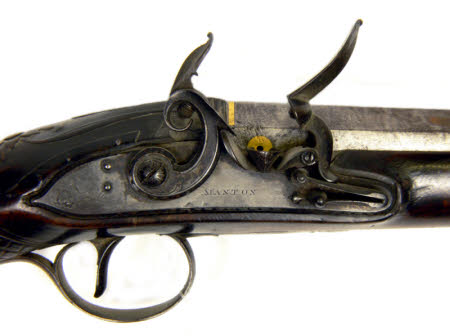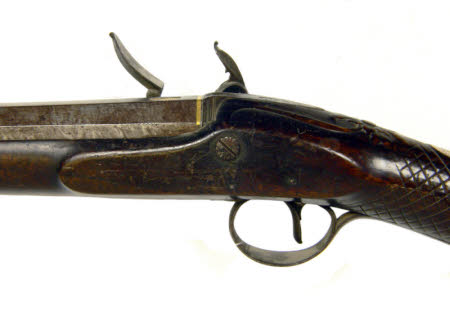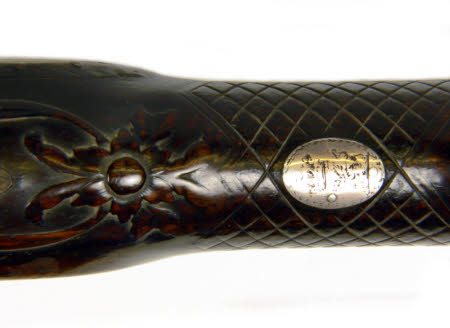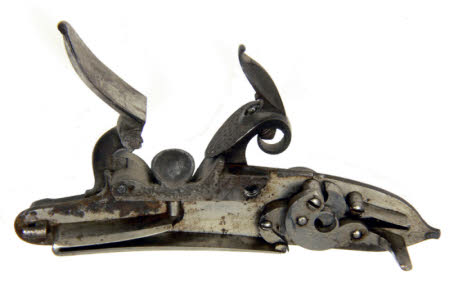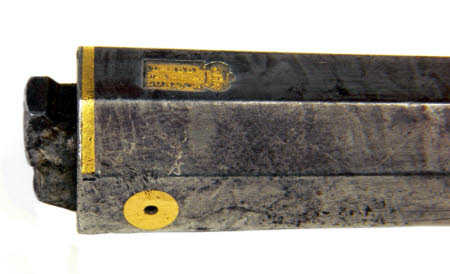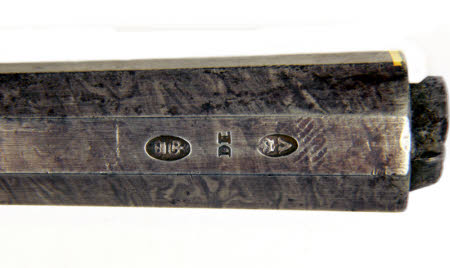Flintlock
Durs Egg (1748 - 1831)
Category
Arms and armour
Date
1700 - 1800
Materials
steel, silver and walnut
Measurements
1313 mm (Height)
Place of origin
London
Order this imageCollection
Powis Castle and Garden, Powys
NT 1181085
Summary
Firearm. An 18th century flintlock sporting gun by Durs Egg of London, the hatched walnut stock with oval silver plaque engraved with a wyvern beneath a coronet.
Full description
A flintlock sporting gun, c1784/5 by Durs Egg, re-locked by John Manton in c1805. Durs Egg, born Switzerland 1748, worked in London from 1772 and established shops in various locations such as Princes St, The Haymarket, The Strand and Pall Mall. He supplied fine quality firearms for Londons elite and became gunmaker to George IV and the Duke of York. He died in 1831. Many of his sporting guns are among the Royal Collection at Windsor. John Manton, born in 1752, worked in London from 1781. He established a shop in Dover St. Piccadilly, supplying firearms of the highest quality to London’s elite and was appointed Gunmaker in Ordinary to George IV in 1831. He died in 1834. Associated item: gun case POW/F/521 by John Manton. Round Stub twist iron barrel, formed in 2 stages, octagonal at the breech then round to the muzzle. The underside with a lower rib and 2 ramrod pipes. The breech with a gold line and inset gold makers mark, Durs Egg, London. The underside of the barrel stamped with the proof marks of the London Gunmakers Company and the initials DE (Durs Egg). Gold lined touch-hole. Bead foresight with silver “spider” form decoration. Engraved false breech (with sighting channel) and barrel tang. Retained to the stock by 2 barrel slides, each with silver escutcheons. Whale-bone ramrod, the forward end with a steel tip, the rear with a steel worm. Barrel length 92cm. Calibre 12mm. Walnut half stock, chequered at the wrist in a broad diamond pattern, and with a carved “flower” motif behind the barrel tang. Engraved steel furniture comprising; buttplate, trigger guard with decorative pineapple/pomegrante finial, and fore-end pipe. Silver escutcheon to the wrist engraved with the Clive family crest. Flintlock, the flat plate with a bevelled edge engraved, the tail of the plate engraved with a rabbit. “French” form cock, waterproof pan and with an anti-friction roller to frizzen spring. Signed beneath the pan MANTON. The top jaw and screw missing. The frizzen (or hammer) formed with a “lip”, which was patented by Joseph Manton (John Manton’s brother) in 1803. Retained to the stock by 1 sidenail. Overall length: 131.3cm
Provenance
Purchased by the National Trust from John George Herbert, 8th Earl of Powis and the Powis Estate Trustees in June 2010.
Marks and inscriptions
Lockplate - beneath pan: Manton Top rear of barrel: D, Egg London
Makers and roles
Durs Egg (1748 - 1831), gunsmith
References
Neal & Back, 1980: William Keith Neal & David Back, British Gunmakers: their trade cards, cases & equipment Blair, 1966: Claude Blair, The Eggs and Their Origins, .Journal of the Arms & Armour Society, pp. 353-357, Vol. 5, No. 8, (Dec. 1966) Blair, 1973: Claude Blair, The Egg Family, Journal of the Arms & Armour Society, Part 1, pp. 266 299, Vol. 7, No. 9/10, (March June 1973); Part 1 (continued), pp. 305 353. Vol. 7, No. 11/12, (Sept. Dec. 1973) Neal & Back, 1967: William Keith Neal & David Back, The Mantons Neal & Back, 1978: William Keith Neal & David Back, The Manton Supplement
